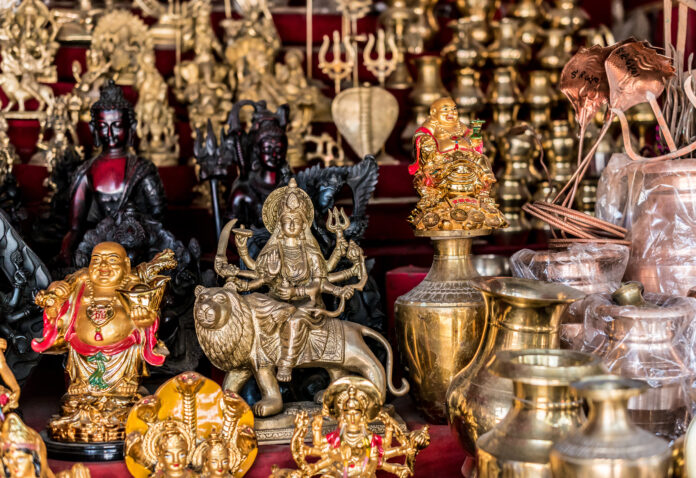Preserving an Ancient Craft in a Modern World
Frontpage Journal | July 2025
Kandy, nestled in the central hills of Sri Lanka, is known for its rich cultural heritage and historic significance as the last royal capital of the island. Among the many traditional arts that thrive in this region, brass handicrafts hold a special place. These finely crafted brass items reflect centuries of artistry and tradition. Yet today, in an age dominated by mass production and modern materials, the brass artisans of Kandy face both challenges and opportunities in preserving their craft.
The story of brass craftsmanship in Kandy is intertwined with the city’s religious and cultural identity. For generations, local artisans have created intricate brassware used in Buddhist temples, royal ceremonies, and daily life. These include ritual objects such as lamps, vases, and offering bowls, as well as decorative pieces like statues and ornamental utensils.
The process of making brass handicrafts is a demanding art form. It begins with the careful selection of raw materials, copper and zinc combined in specific proportions to create brass with desired qualities. Artisans then employ techniques such as casting, hammering, engraving, and polishing to shape and embellish each piece.
One distinctive feature of Kandy’s brassware is the fine detail and motifs inspired by nature, mythology, and religious symbolism. Leaves, flowers, and sacred animals often appear in the designs, reflecting the deep spiritual connection between the craft and local culture. The artisans’ skill in engraving delicate patterns by hand demonstrates a mastery that takes years
to develop.
Despite its cultural richness, brass handicraft faces difficulties in today’s marketplace. The demand for traditional brass items has declined as plastic, stainless steel, and other cheaper materials have become more common in households and religious institutions. Younger generations of craftsmen are also less inclined to continue the labor-intensive work, leading to concerns about the survival of the trade.
To address these issues, some artisans and organizations in Kandy have taken steps to innovate and adapt. New designs are emerging that blend traditional techniques with modern aesthetics. Brass items are being created not only for ritual use but also as home decor, gifts, and collectible art. This diversification opens doors to new customers both within Sri Lanka and abroad.
Tourism also plays a role in sustaining the brass craft. Visitors to Kandy often seek authentic souvenirs that represent the island’s heritage. Workshops and craft villages allow tourists to observe the making process and purchase directly from artisans. This interaction provides valuable income and raises awareness about the importance of preserving traditional skills.
Efforts to protect and promote brass handicrafts extend beyond the artisans themselves. Cultural organizations, government agencies, and heritage bodies collaborate to provide training, access to markets, and financial support. These initiatives aim to create sustainable livelihoods while safeguarding the intangible cultural heritage embodied in brass art.
Environmental considerations are increasingly important in brass production. Responsible sourcing of metals and recycling scrap brass help reduce the ecological footprint. Some workshops have introduced cleaner energy and waste management practices to align the craft with modern sustainability standards.
Education is key to the craft’s future. Programs aimed at young people encourage them to learn the techniques and understand the cultural significance behind the work. By nurturing new talent, the tradition can be passed on and reimagined for the contemporary world.
Brass handicrafts from Kandy are more than objects; they are storytellers of history, faith, and identity. Each piece carries the mark of human creativity shaped by time and place. Preserving this ancient craft requires a balance between honoring tradition and embracing change.
In conclusion, the brass artisans of Kandy stand at a crossroads. Their work connects the past to the present, bridging generations through the language of metal and design. With continued support, innovation, and recognition, this timeless craft can flourish in the modern world, offering beauty and meaning for years to come.




